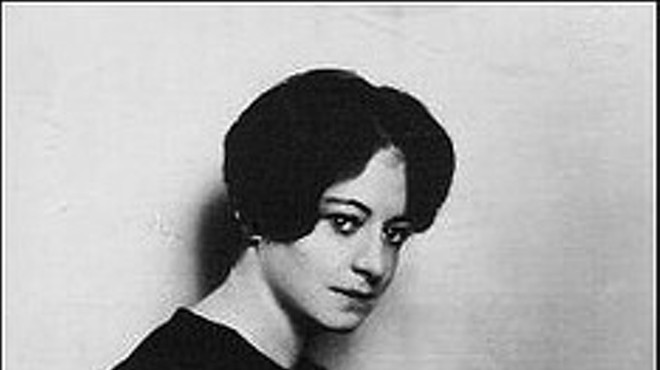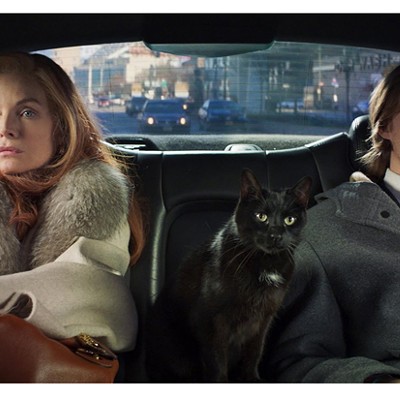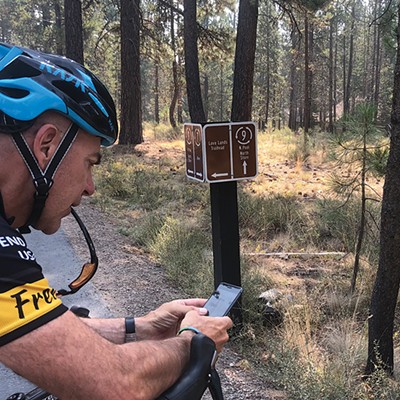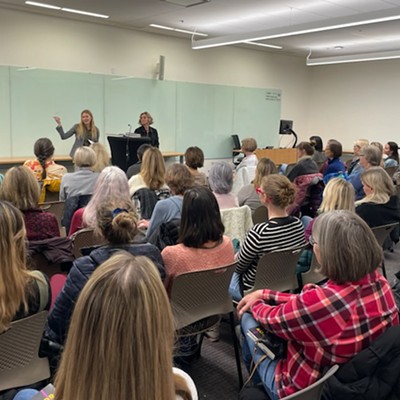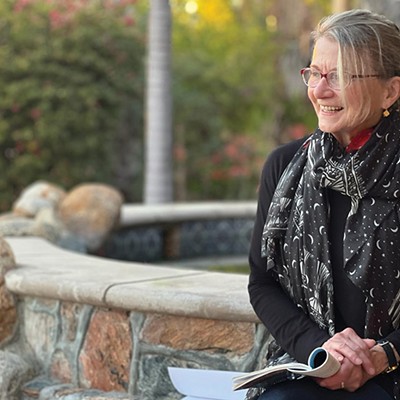Here's one you haven't heard before: Gertrude Stein, Oscar Wilde, and Nora Ephron walk into the Tin Pan Alley.
No, it's not the prelude to a raunchy literary joke, but the setting of the upcoming Dearly Departed: A Tribute to the Authors of Yesteryear. OSU-Cascades' Low Residency MFA Program is sponsoring the event, held at Tin Pan Theater March 12, which seeks to challenge students and other literary types to embody the spirit of a beloved (dead) author for a night of raucous costumed readings. And, good news, they're taking participant submissions up to the day of the event. Here's your guide to embodying the spirit and the work of your favorite deceased writer.
1. Pick an author.
Have you ever read a book? Good! Recall one that stuck with you, perhaps something you studied in school from the cannon of so-called "classics." You're coming late to the game, so be forewarned that Gertrude Stein, Dorothy Parker, Damon Runyon, Oscar Wilde, Daphne De Mornay, and Nora Ephron have already been selected, probably by a graduate student who has prepared for weeks and will put your tawdry Oscar Wilde impression to shame. Peruse your bookshelves for the names that inspire you, or better yet—hit up your neighborhood bookstore.
According to Low Residency MFA Director Dr. Emily Carr, "One of the foundational tenets of our curriculum—and any arts education, really—is establishing historical precedents for our work."
Carr's colleague, core faculty member TC Tolbert, teaches his students to search for influence in their own literary lineage and family.
"Figuring out the writer who you are and hope to become involves looking at the writers you love—and some you didn't even know you love—and the writers they love—and maybe some they didn't know they loved—and so forth," said Tolbert.
2. Embody your dearly departed author in costume and spirit.
This is no simple literary "reading." Participants will be expected to go all out in channeling their chosen author. Does your author have a trademark look? Hunter S. Thompson was rarely photographed without a cigarette in one hand and a whisky tumbler in the other. Truman Capote was a well-dressed man whose look favored a sharp bow tie or a cardigan flamboyantly draped over his shoulders. Virginia Woolf had a fondness for furs. The Bronte sisters wore Victorian gowns with puffed sleeves and lacy shawls. A good hard scavenge of area thrift stores and Grandma's attic may be in order to find the appropriate period attire. Your literary incarnation does not begin and end with capturing your artist's look, however.
"Embodying the spirit of the dead author starts with the costume and goes so much further: mannerisms, tone of voice, performance style, accent, gestures, and so forth," said Carr.
Whether you channel Capote's lisp and languid physicality or Emily Dickinson and JD Salinger's asocial hermitage, a little research goes a long way.
OSU Cascades MFA Program Assistant Rachel Ratner will be reading as beloved essayist and screenwriter Nora Ephron.
"To get into character I've been re-reading pieces from The Most of Nora Ephron," said Ratner. "And of course, I've got When Harry Met Sally on in the background while I'm doing dishes."
And what about Ephron's characteristic New Yorker accent?
"Luckily, I'm a New Yorker, so getting the accent and affect is second nature," said Ratner.
Here's where you might want to brush up on the biography of your famous writer. Where were they living at the time and what forces shaped their style and personal aesthetic? Langston Hughes and Zora Neal Hurston's works were influenced by the Jazz Age and Harlem Renaissance, Virginia Woolf and Sylvia Plath were two creative women deeply affected by depression.
"Performance is, in fact, an important way in engaging with literature," said Carr. "It's like the attic window cracked open for exploration: an opportunity to enter the text in a new way, to try to access the mysterious intent behind the words the author inscribed on the blank page."
3. Select a three-to-five minute excerpt from the author's work and bring your reading to Tin Pan Theater on March 12.
Maybe it's a selection from your author's most famous and oft-quoted work. Or the passage that grabbed you during your first, second and third reading of the author. It could just be a hilarious, insightful, or melancholy piece that you feel embodies the life of its creator. Have fun with it; the event offers participants the freedom to be (almost) whoever they want to be, and to read from someone else's work.
"Just like writing is a skill, performing written work is also a skill, and this event challenges [us] to perform major literary works," Carr said, "while also having a blast playing dress-up and trying on new accents and voices."
Interested participants should contact rachel.ratner @osucascades.edu with the name of their author.

